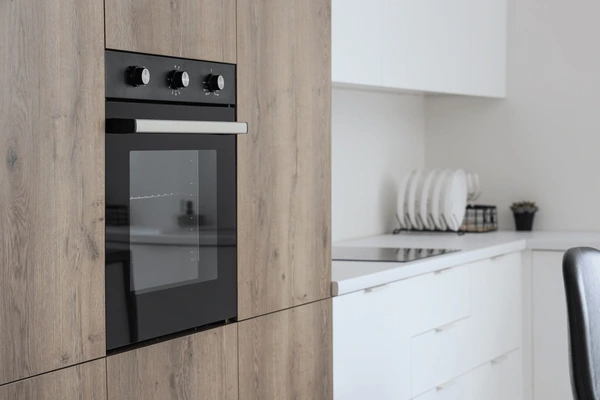Skip to content
How To Install Brown Wall Oven

Installation Guide for the Brown Electric Wall Oven
1. Pre-Installation Considerations
- Check Local Codes: Ensure that the installation follows local building and electrical codes. If you’re not familiar with these, it’s best to consult a professional installer or electrician.
- Electrical Requirements: Verify that your wall oven is connected to a dedicated 240-volt circuit with a suitable breaker (typically 30-amp or as specified in the oven’s manual).
- Space & Ventilation: Ensure that the installation area provides enough space for the oven to be installed. Check the manufacturer’s instructions for minimum clearance requirements from adjacent walls and cabinetry.
- Wall Framing: Confirm that the wall where the oven will be installed is structurally sound and that it has adequate framing to support the oven’s weight.
2. Unboxing the Oven
- Carefully unpack the wall oven from the box. Check for any visible damage that may have occurred during shipping.
- Remove any protective packaging or tape from the oven.
3. Prepare the Installation Area
- Measure the Opening: Measure the cabinet or wall space where the oven will be installed. Ensure that the space meets the dimensions specified in the oven’s installation guide.
- Check for Clearance: Make sure there is enough clearance for proper airflow around the oven to avoid overheating and ensure safe operation.
- Prepare the Electrical Connection: Run the appropriate wiring to the installation site, ensuring that the wire gauge and breaker size match the specifications in the oven’s manual.
4. Connecting the Electrical Supply
- Turn off the Power: Before connecting the oven to power, make sure the circuit breaker is turned off to avoid electric shock.
- Wiring the Oven: Brown electric wall ovens typically come with either a hard-wired connection or a plug-in option. If your oven uses a hard-wired connection:
- Grounding: Ensure that the oven is properly grounded by connecting the ground wire to the designated grounding terminal in the oven.
- Connect the Wires: Follow the manufacturer’s wiring diagram to connect the oven’s power supply to the oven’s terminal block. Typically, there will be three wires (black, red, and white) for a 240-volt connection and a green wire for grounding.
- If a plug is required, attach the oven’s power cord to the oven’s terminal block and ensure it is secured.
- Double-Check Connections: Ensure that all connections are secure and free of exposed wires. Tighten all terminal screws to avoid loose connections.
5. Mounting the Oven
- Slide the Oven into Place: Carefully slide the electric wall oven into the cabinet opening. Make sure it fits snugly and aligns with the surrounding cabinetry. Ensure that there is enough space for the oven’s air vents.
- Secure the Oven: Once the oven is properly positioned, secure it to the wall or cabinet using the provided mounting brackets or screws. Follow the manufacturer’s instructions for securing the oven to ensure that it is level and stable.
6. Final Checks
- Check Alignment: Ensure the oven is flush with the cabinet and properly aligned. The door should open and close without obstruction.
- Install the Trim Kit: If your oven came with a trim kit, install it around the oven to cover any gaps between the oven and the cabinet.
- Reconnect Power: After all connections are secure, turn the circuit breaker back on and test the oven.
- Test the Oven: Set the oven to a low temperature to ensure that it is heating properly. Check for any signs of malfunction, such as unusual sounds or error codes.
7. Post-Installation Considerations
- Check for Proper Ventilation: Ensure that the oven is not obstructed and that there is adequate airflow to prevent overheating.
- Read the User Manual: Familiarize yourself with the oven’s features and settings to optimize performance.
- Professional Assistance: It’s recommended to consult a professional installer or electrician.
Safety Tips:
- Always turn off the power before working on electrical connections.
- Use proper tools and follow the manufacturer’s instructions.
- If in doubt, hire a licensed electrician to ensure the installation is done safely and in compliance with local codes.
You may also like...




